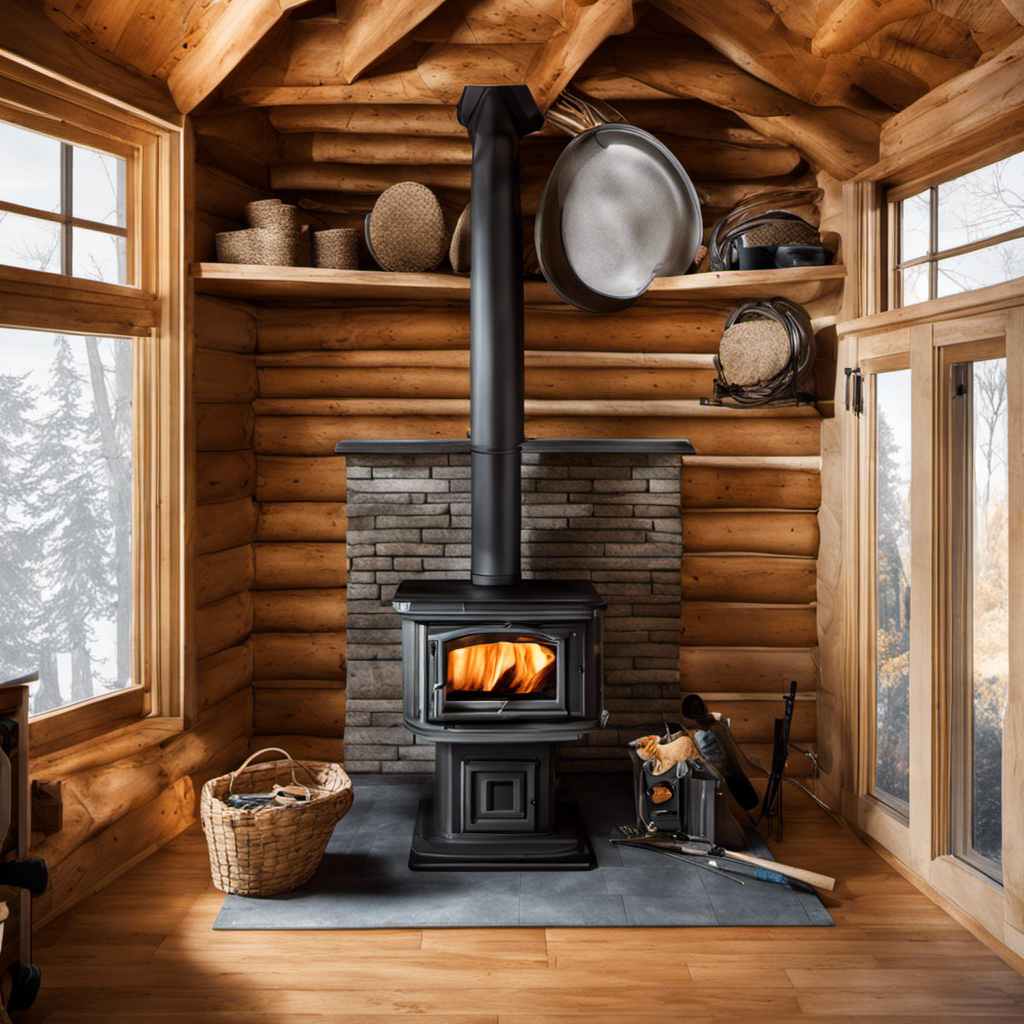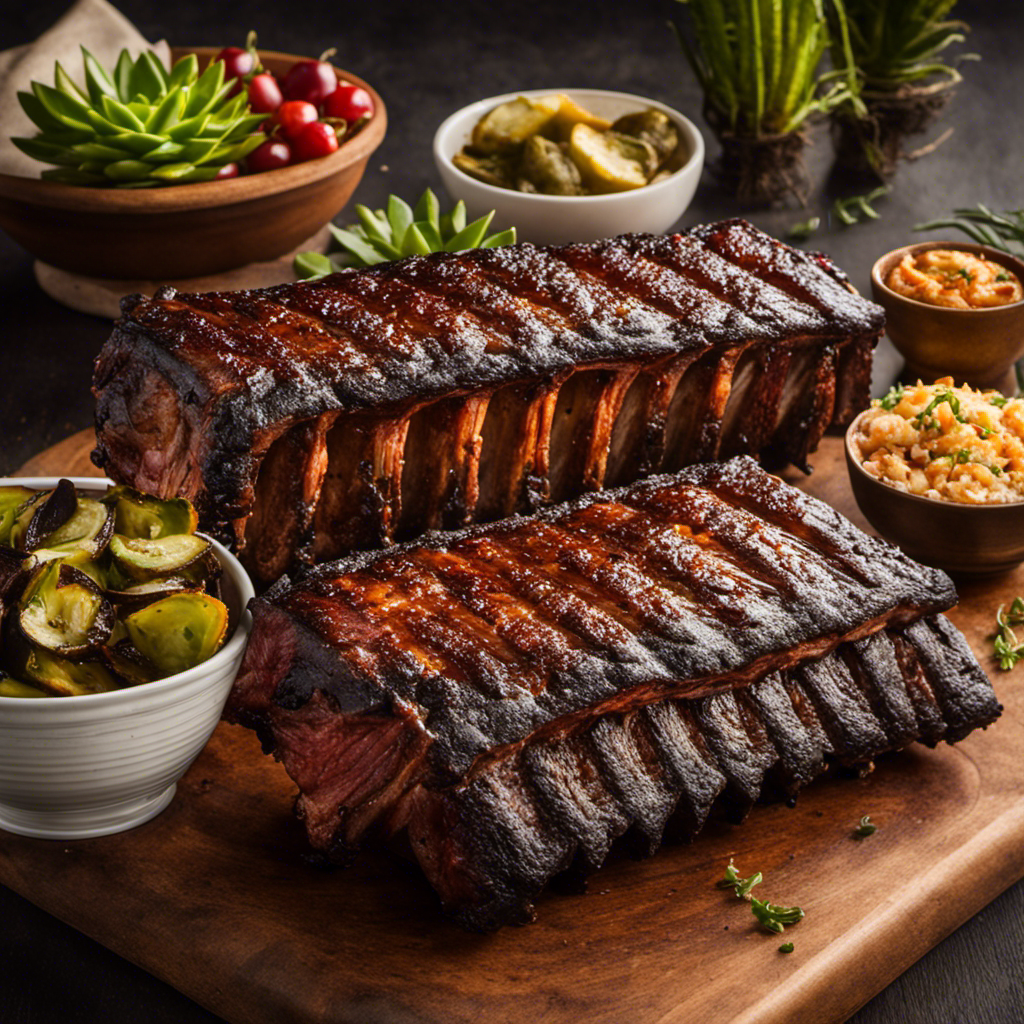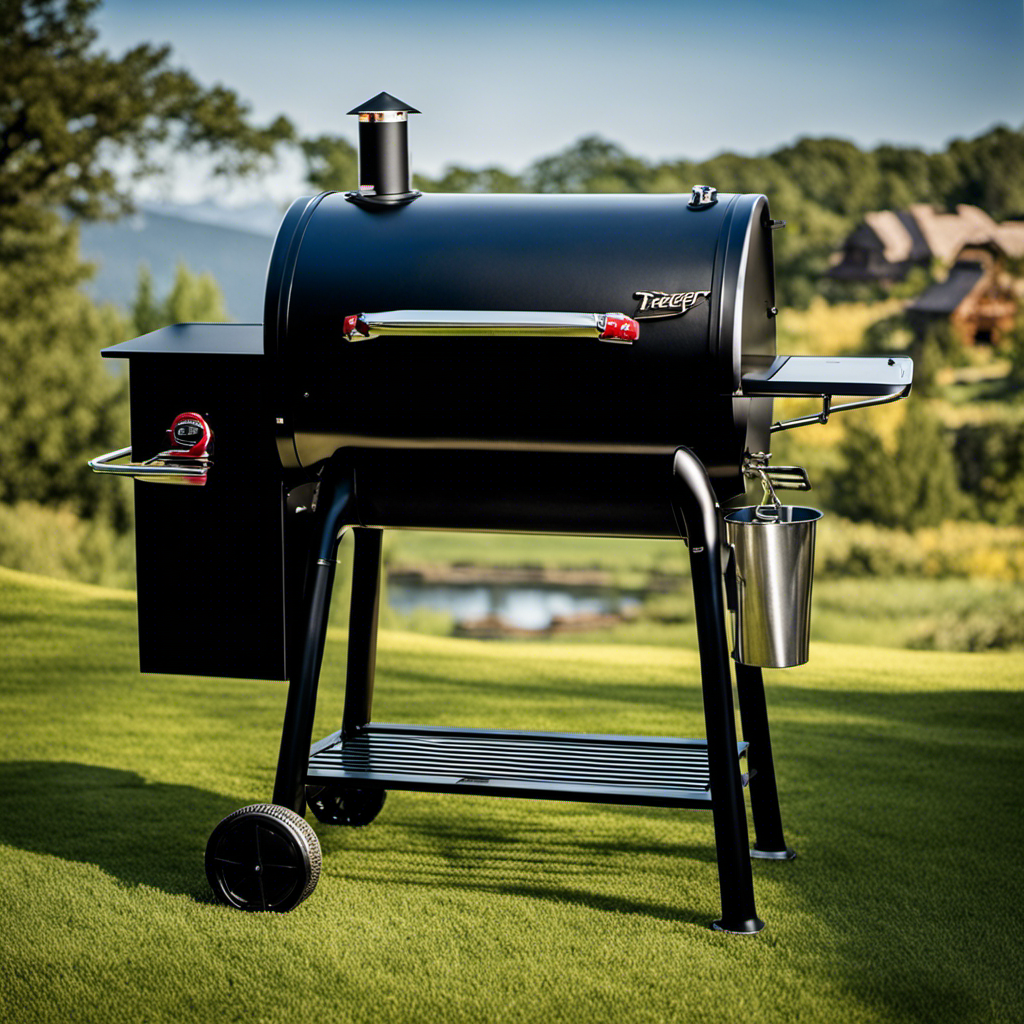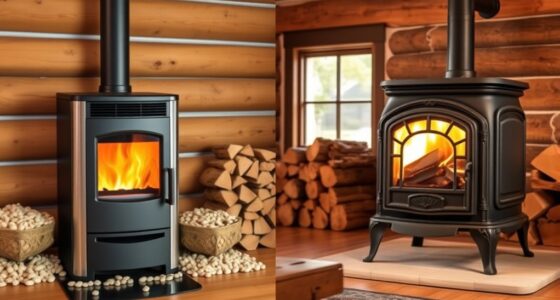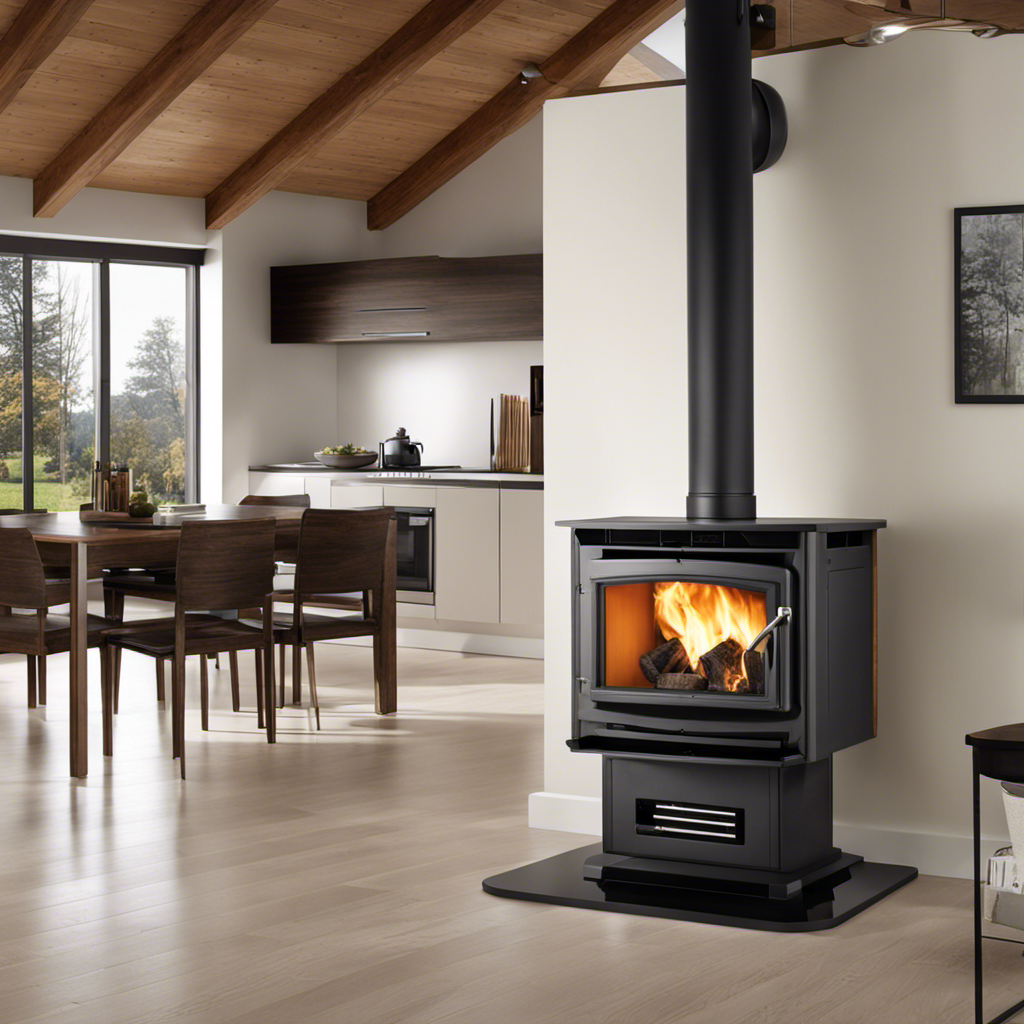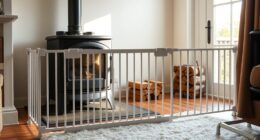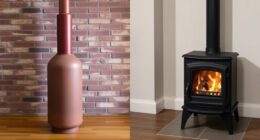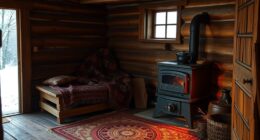I’ve always been drawn to the cozy warmth and cost-effectiveness of wood pellet stoves. Were you aware that installing a wood pellet stove in your home has the potential to reduce your heating bills by up to 50%?
In this article, I’ll guide you through the step-by-step process of installing a wood pellet stove in your home. From understanding the basics to selecting the right location and gathering the necessary tools, I’ll provide detailed instructions and tips for a successful installation.
So let’s get started on creating a comfortable and efficient heating solution for your space!
Key Takeaways
- Wood pellet stoves burn compressed wood pellets made from recycled materials.
- They have high heating efficiency and low emissions.
- Proper installation requires selecting the right location, ensuring ventilation and safety precautions.
- Gather the necessary tools and materials for installation, including venting components and fireproof caulk.
Understanding the Basics of Wood Pellet Stoves
To understand the basics of wood pellet stoves, you’ll need to learn about their fuel source and how they work.
Wood pellet stoves are designed to burn compressed wood pellets as their primary fuel source. These pellets are made from recycled materials such as sawdust and wood chips, which makes them an eco-friendly option.
The basic operation of a wood pellet stove involves loading the pellets into a hopper, which is then automatically fed into a combustion chamber. A fan blows air across the burning pellets, creating heat that is then distributed throughout the room via a blower system.
Some advantages of wood pellet stoves include their high heating efficiency, ease of use, and low emissions compared to traditional wood-burning stoves. However, it’s important to note that they do require electricity for operation and can be more expensive than other heating options in terms of upfront costs.
With this understanding of how wood pellet stoves work, let’s move on to selecting the right location for your stove…
Selecting the Right Location for Your Wood Pellet Stove
When selecting the right location for your wood pellet stove, it’s important to consider factors such as proximity to an electrical outlet and proper ventilation.
First, you’ll need to ensure that your chosen spot is near an electrical outlet, as pellet stoves require electricity to operate. Additionally, proper ventilation is crucial for safety and efficiency. Make sure there is enough space around the stove for air to circulate freely and prevent overheating.
Another important aspect when choosing the right location is determining the appropriate size of your stove. Consider the square footage of the area you want to heat and choose a stove with a heating capacity that matches your needs.
During installation, it’s essential to follow safety precautions. Ensure that all connections are secure and properly sealed, use a fire-resistant base beneath the stove, and keep flammable materials away from the stove.
With the location selected and safety measures in mind, you can now move on to gathering the necessary tools and materials for installing your wood pellet stove…
Gathering the Necessary Tools and Materials
Once you have chosen the perfect location, gather all the tools and materials needed for installation.
When it comes to choosing the right size stove, it’s crucial to consider your specific heating needs. To calculate heat output requirements, take into account the square footage of the area you want to heat and its insulation level. This will help determine the appropriate BTU (British Thermal Units) rating for your stove.
Additionally, make sure to measure the space where you intend to install the stove accurately. You’ll need a tape measure, screwdriver set, drill with bits, chimney pipe kit, venting components, hearth pad or floor protector materials, and fireproof caulk or sealant.
Now that you have everything ready, let’s move on to preparing the installation area by ensuring it meets safety standards and regulations.
Preparing the Installation Area
Now that you’ve gathered all the necessary tools and materials, it’s time to ensure that the installation area meets safety standards and regulations. Here are four important steps to take in preparing the installation area for your wood pellet stove:
-
Ensuring Proper Ventilation: It is crucial to have proper ventilation in the installation area to prevent carbon monoxide buildup. Make sure there is adequate airflow and consider installing a venting system if needed.
-
Clearing the Installation Area: Remove any furniture, curtains, or flammable objects from the vicinity of the stove. Clear a minimum distance of three feet around the stove to minimize fire hazards.
-
Checking for Combustible Materials: Inspect the walls, floor, and ceiling near the installation area for any combustible materials such as drywall or insulation. These should be replaced with non-combustible materials before proceeding.
-
Verifying Local Regulations: Check local building codes and regulations regarding wood pellet stove installations. Ensure that you comply with all requirements to guarantee a safe installation process.
With these preparations complete, let’s move on to our step-by-step installation guide for wood pellet stoves…
Step-by-Step Installation Guide for Wood Pellet Stoves
When it comes to installing a wood pellet stove, understanding the venting requirements is crucial. Proper ventilation ensures safe and efficient operation of the stove.
To meet these requirements, you will need specific tools and materials such as a vent pipe, elbows, connectors, and sealant. These components work together to create a secure and effective venting system for your stove.
Venting Requirements for Stoves
To properly vent your wood pellet stove, you’ll need to ensure that the venting system meets all the necessary requirements. Venting regulations are in place for safety reasons, and it’s crucial to follow them to prevent any potential hazards.
Here are some key points to consider when it comes to venting your wood pellet stove:
- Check local building codes and regulations regarding venting systems.
- Ensure proper clearance from combustible materials.
- Use double-wall or triple-wall insulated pipes for the venting system.
- Install a vertical chimney whenever possible.
By adhering to these guidelines, you can ensure safe and effective ventilation for your wood pellet stove.
Now let’s move on to discussing the necessary tools and materials for installing your stove without compromising safety or efficiency.
Necessary Tools and Materials
To ensure a safe and efficient installation, you’ll need a set of basic tools such as a screwdriver, pliers, and a level. These tools will help you properly install your wood pellet stove.
Before starting the installation process, there are a few preparation steps you should take. First, make sure to read the manufacturer’s instructions thoroughly to familiarize yourself with the specific requirements for your stove model.
Next, gather all necessary materials such as venting components, chimney liner kit (if required), and any additional accessories recommended by the manufacturer. Additionally, ensure that you have the proper clearances from combustible materials in your home.
By following these preparation steps and having the necessary tools on hand, you’ll be well-equipped to proceed with the installation process.
Now that we’ve covered the necessary tools and materials for installing your wood pellet stove, let’s move on to some important tips for proper maintenance and safety of your appliance.
Tips for Proper Maintenance and Safety of Your Wood Pellet Stove
Regular maintenance is crucial for ensuring the safety and longevity of your wood pellet stove. By following these maintenance tips and safety precautions, you can keep your stove running efficiently and prevent any potential hazards.
Here are some key maintenance tips to keep in mind:
| Maintenance Tips | Safety Precautions |
|---|---|
| Clean the burn pot regularly | Always turn off the stove before performing any maintenance tasks |
| Check and clean the exhaust vent | Wear protective gloves when handling hot components |
| Inspect and replace worn gaskets | Keep flammable materials away from the stove |
| Empty and clean the ash pan | Install a carbon monoxide detector near your stove |
Frequently Asked Questions
How Much Do Wood Pellet Stoves Typically Cost?
Wood pellet stoves typically cost around $1,500 to $3,000, depending on the brand and features. They offer numerous benefits for homes, including cost savings on heating bills and reduced carbon emissions compared to traditional heating methods.
Are Wood Pellet Stoves Environmentally Friendly?
Wood pellet stoves have pros and cons when it comes to their environmental impact. They produce less carbon emissions compared to traditional wood stoves, but the production of pellets can contribute to deforestation.
Can a Wood Pellet Stove Be Installed in an Existing Fireplace?
Yes, a wood pellet stove can be installed in an existing fireplace. It offers the benefits of efficient heating and reduced carbon emissions. To install, consult a professional for proper ventilation and chimney modifications.
What Kind of Maintenance Does a Wood Pellet Stove Require?
Maintaining a wood pellet stove is crucial for its efficient operation. Regular cleaning, including the ash pan and glass door, is necessary to prevent blockages and ensure optimal performance. Troubleshooting common issues promptly can help avoid more significant problems down the road.
Are There Any Safety Concerns With Using a Wood Pellet Stove?
When it comes to using a wood pellet stove, safety is crucial. Fire hazards can be minimized by proper installation and regular maintenance. Additionally, ensuring proper ventilation is essential for safe operation.
Conclusion
In conclusion, installing a wood pellet stove can be a rewarding project that adds warmth and efficiency to your home. By following the step-by-step installation guide and practicing proper maintenance, you can enjoy the benefits of this eco-friendly heating option for years to come.
Did you know that wood pellet stoves have an impressive energy efficiency rating of 80% to 90%, compared to traditional fireplaces which typically have an efficiency rating of only 5% to 10%? This means that you can save on energy costs while reducing your carbon footprint.
So why wait? Start enjoying the cozy comfort of a wood pellet stove today!

